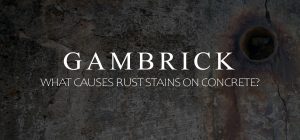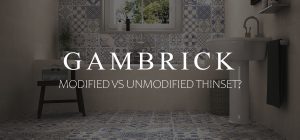How To Insulate A Concrete Wall
Concrete is a fantastic material that’s used to build homes around the world. It’s strong, durable, resistant to the elements and very versatile. But it offers almost no natural insulation value. A 12 inch thick solid concrete wall has an average R-value of around a 2. Compare that with an inch of rigid foam with an R-value between 3 and 6. That’s over 20 times as much as concrete. Adding insulation to your concrete walls will improve your home’s energy efficiency, save money each money on energy bills and make it more comfortable to live in by regulating temperatures. There are quite a few ways to insulate a concrete wall, in this article I’ll explain the best ways to insulate a concrete wall, what types of insulation you should use, and how to install them.
Depending on where your concrete walls are will effect the method and type of insulation you should use. In most cases, a homes concrete walls are in the basement. This creates some unique challenges because basement walls are almost always below grade. But some homes, especially Modern ones, have concrete walls throughout the house. This design comes with it’s own set of requirements and issues.
In addition to insulation, you should also consider how to cover your concrete walls. Whether it be wallpaper, paint, wood, masonry, drywall, or nothing at all, your wall finish will interact with the insulation.
How Much Insulation Do You Need?
Before we start discussing insulation methods and types, it’s important to figure out how much you actually need. All materials are rated in terms of their R-value. It’s a rating of how resistance a material has to heat and cold passing through it. The higher the number the lower the resistant and the easier it is to pass heat and cold. Think of insulation as a barrier that blocks heat.
Concrete walls have an R-value of around 2. When heat or cold comes in contact with concrete it passes right through with almost no resistance. But, when that same heat or cold comes in contact with an R-19 wall it’s either slowed down or stopped. The higher the number the more resistant the material is.
Visit the U.S. Department of Energy’s website to determine how much insulation you need based on where you live. Most homes require insulation values between R-13 and R-21 in their walls. It makes no difference if that wall is made from concrete or wood studs, the R-value requirement is the same. But the method of insulation and type used may vary.
Calculate how many inches of insulation you need to achieve your desired R-value based on the type your using.
- Fiberglass batts offer an R-value between 3 and 4 per inch,
- Rigid foam provides an R-value between 3 and 6 per inch.
- Open-cell spray foam is approximately 3.5 per inch.
- Closed-cell spray foam averages 6.5 per inch.
Once you know the type of insulation you’ll be using it’s easy to calculate how many inches you need.
Basement Concrete Walls Vs Above Grade Concrete
There’s a big difference between insulating a below grade basement concrete wall and walls that are above grade, and that difference is moisture. Above grade concrete typically has additional layers of protection added to the concrete which helps block moisture. This could be a layer of stucco, stone veneer, brick, paint or a sealer. Concrete by nature absorbs moisture because of how porous it is. That moisture can work it’s way right through the concrete and into the house. But that’s a lot less likely when the concrete wall is above grade.
Above grade concrete walls also have airflow to help dry them out. This is another factor missing from below grade concrete.
A concrete basement wall has earth right up against it which can get soaked from rainfall or ground water. That water can sit right up against the concrete. This is why vapor barriers like plaster and tar as well as drains are added to most foundations. Keeping water out is a big concern.
So what does this have to do with insulating concrete walls? When the walls are in a basement, stopping moisture penetration is a bigger issue. For this reason we recommend rigid foam against the block or closed-cell spray foam. We also add a vapor barrier and caulk/tape all the seams.
With above grade concrete walls, the above insulation methods still work, but you can also use regular batt insulation too.
Batt insulation also works in a basement but you have to use a good vapor barrier along with it. You don’t want batt insulation getting wet.
Basements Are Cooler With less Airflow & Light
Another issue with insulating basement concrete walls is how much cooler the basement tends to be. Generally, homeowners don’t regulate the temperature as much in the basement as they do the living space. So it tends to be a lot cooler most of the time even when insulated.
Basements are also darker than other floors of the home with a lot less natural light.
And lastly, basement don’t typically have the airflow of the living spaces. People aren’t going in and out and the windows are rarely opened.
All these issues combined means mold and mildew are more likely to grow in a basement. Mold like cool, wet and dark places. The basement will most likely be cooler, and probably darker, but it doesn’t have to be wet.
Moisture is the one main ingredient for mold growth that you can do a lot about. By properly insulating the basement with a closed-cell spray foam, rigid foam or a plastic vapor barrier, you can keep out moisture and prevent mold.
How To Insulate Concrete Walls With Studs
First, build a wood frame wall out of studs. Frame the wall just as you would any wall in the house. Typically with a single bottom plate and double top. Vary the thickness of the wall based on the thickness of your insulation. Typically R-13 needs a 2×4 while a 2×6 is needed for R-19 to R-21. If your building something like a Passive House that has wall insulation R-values over R-40, you can use a 2×12 or double stud wall.
Leave a gap between the studs and concrete wall of about 2 inches. If your using batt insulation this gap provides a little air flow space. If water does penetrate the concrete it can run down and hopefully into a drain without touching the insulation. But if your using spray foam you should fill this gap with insulation. Spray the foam inside the gap, behind the studs, and in the voids between studs. Closed-cell spray foam is a great water barrier. You could also fill this gap with a layer of rigid foam insulation before you build the stud wall.
In terms of cost, concrete walls are not cheaper than wood to insulate. They can’t use regular batt insulation, so the insulation is harder and more expensive to install.
You may want to secure the stud wall to the concrete with some masonry screws. It’s up to you but not necessary.
If using batt insulation, press each layer of insulation between the studs, making sure the insulation fits tightly to the sides of each stud. Friction should hold the insulation in place. If it falls then the insulation wasn’t cut correctly or the studs are too far apart.
Don’t compress the insulation. If the insulation gets squeezed when you install the wall board, that means your studs are too small. Compressing batt insulation lowers it’s effective R-value.
What’s The Best Type Of Insulation For Concrete Walls?
In my opinion, the best type of insulation for a concrete basement wall is closed-cell spray foam. Build a stud wall like we described in the previous section with at least a 2 inch gap between the studs and concrete. Spray foam into the gap and the space between studs.
Use closed-cell spray foam instead of open-cell. Closed-cell is a better insulator per inch and water resistant. By spraying the foam inside the gap, right against the black, you create a vapor barrier and thermal break as well as providing great R-value.
Our next choice would be using a layer of rigid foam against the block with a stud wall. This is the same basic option as using spray foam. The layer of rigid foam acts as a vapor barrier and thermal break as well as providing some additional inches. 2 Inches is worth around 6-12 R-value. Tape and caulk all the seams. Once that’s done you can use standard batt between the studs. This is a good option if you don’t want to use spray foam.
You can also use a layer of plastic between the batt and concrete to be extra safe. Keeping water out of the house is very important.
What About Above Grade Concrete Walls?
The best type of insulation for above grade concrete walls is more or less exactly the same as below grade walls. The biggest difference is that water isn’t as big an issue. This is because of the additional layers of protection that should be on the outside of the house and airflow.
But that’s assuming your house is well built and doesn’t have water issues. That’s not always the case. Just as you would when insulating a basement, make sure the house doesn’t have water problems. If it does, fix those issues before insulating.
I like to stay on the safe side and use closed-cell spray foam or rigid foam with batt and a plastic water barrier no matter where the concrete wall is. The way I see it, why not add an addition layer of protection. If for some reason the outside layer fails and water starts to get in, the new spray foam, rigid foam or plastic will keep water out of the house and help prevent mold.
As far as insulation R-values are concerned, install as appropriate and at least to code. We build very energy efficient homes all the way up to a Passive House Standard so I always recommend using more insulation rather than less, but the exact amount will vary based on where you live. Obviously a home built in Alaska will need more insulation than one built here in New Jersey.
Types Of Concrete Wall Insulation
Below will review the most popular types of insulation used to insulate a concrete wall.
Spray Foam
In my opinion, spray foam is the best material to insulate a concrete wall with. But it comes in two forms, closed-cell and open-cell.
Closed-cell spray foam is a better insulator with higher R-value and is more water resistant. It’s perfect for use anywhere that gets damp which is a huge problem with concrete.It’s a great natural water barrier and seals all the small gaps around pipes, wires and vents.
The big problem with spray foam is it’s higher price tag. It’s not something you buy at the store and DIY. Another issue is that spray foam is made with chemicals which is a big turn off for some homeowners. If it’s not done correctly by a Pro, the insulation can smell and potentially make you sick. But, when installed correctly it’s an excellent insulator for concrete.
Rigid Foam
The next best way to insulate a concrete wall is with rigid foam boards. This is the most popular method because it’s so DIY friendly and cost effective.
Rigid foam is a great insulator, R-2 to R-6 per inch on average, and water resistant. I recommend you tape and caulk all the seams once the boards are installed. It’s safe to place them right up against the concrete without any gap.
The key to using foam board is choosing the right thickness for the R-value you need and sealing it properly to create a good vapor barrier. I recommend using Tyvek (or similar) house wrap tape and silicone.
Use “Great Stuff” spray foam in a can to seal around all your penetrations for wires, pipes and ducts and along the bottom of the foam board.
Hybrid Foam & Batt
A hybrid system of foam board and fiberglass is one of the best and most cost effective ways to insulate a concrete wall. You get the best of both worlds. A great vapor barrier from the rigid foam and a thick layer of insulation from batts. Just make sure if you use batts around concrete that you get absolutely no water.
With this method you’ll be installing a layer of foam board right up against the concrete and sealing it with caulk, tape and can foam. Then you’ll frame a stud wall in front of the foam board. Finally, you’ll install batt insulation inside the stud cavities against the foam.
As always, make sure to calculate how much insulation R-value you’ll need. Batt insulation gets thicker as the R-value increases. Match the stud thickness to the insulation thickness. Never compress batt insulation. If the insulation gets squeezed when you install the wall board then your studs are too small. That’s why you match the stud thickness to the insulation.
When you install batts into the stud cavities they should fit snug from side to side. Friction should keep them from falling out. If they do fall that means the studs are too far apart.
Vapor Barriers
A vapor barrier is basically a layer that stops water. This could be a layer of spray foam insulated, properly sealed rigid foam, waterproof concrete paint, or a layer of plastic. In my opinion you should always include a vapor barrier when working with concrete. it’s very important to keep water out of the house and away from wood or insulation. If water gets in it can rot wood and grow mold.
Make sure you properly install the vapor barrier. Seams need to be taped closed or water can still get in. They also need to be in the right place. Installing a vapor barrier incorrectly could actually lock in moisture where you don;t want it.
Vapor barriers also double as an air barrier. This is a great extra bit of protection against drafts.
Summary: How To Insulate A Concrete Wall
Concrete is a fantastic material that’s used to build homes around the world. It’s strong, durable, resistant to the elements and very versatile. But it offers almost no natural insulation value. A 12 inch thick solid concrete wall has an average R-value of around a 2. Compare that with an inch of rigid foam with an R-value between 3 and 4. That’s almost 20 times as much as concrete. Adding insulation to your concrete walls will improve your home’s energy efficiency, save money each money on energy bills and make it more comfortable to live in by regulating temperatures. There are quite a few ways to insulate a concrete wall, in this article we’ll discuss which are the best. We’ll also talk about what types of insulation you should use and how to use them.
Depending on where your concrete walls are will effect the method and type of insulation you should use. In most cases, a homes concrete walls are in the basement. This creates some unique challenges because basement walls are almost always below grade. But some homes, especially Modern ones, have concrete walls throughout the house. This design comes with it’s own set of requirements and issues.
If you have any questions or comments e-mail us any time. We’d love to hear from you.





















